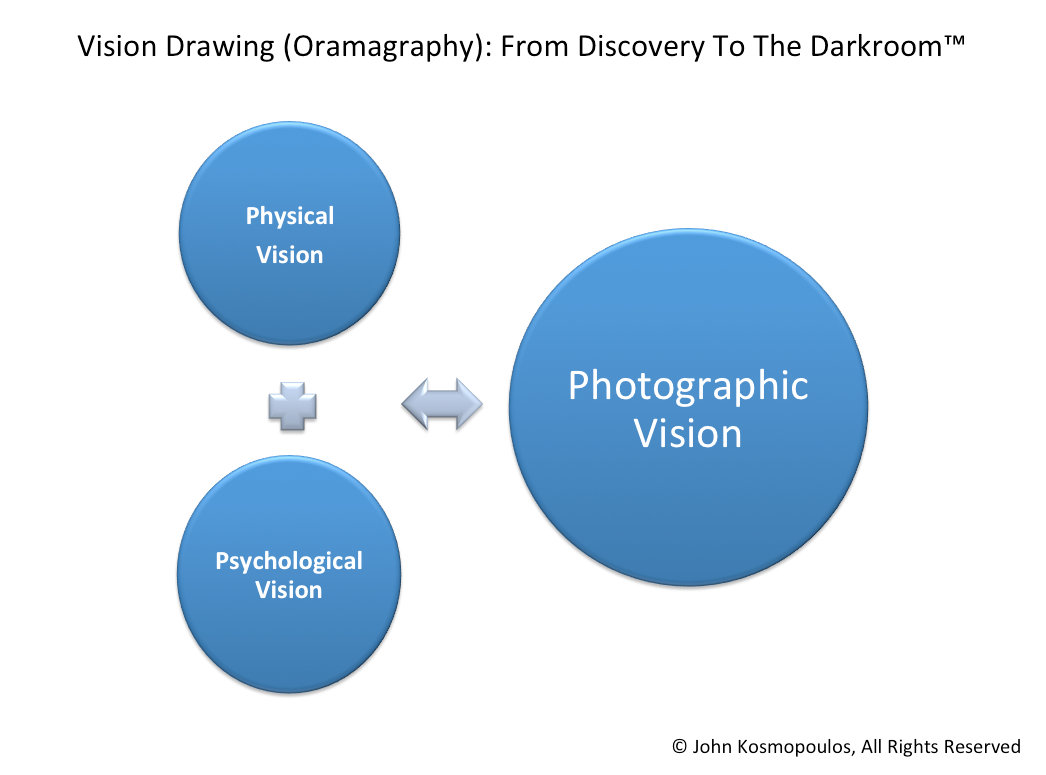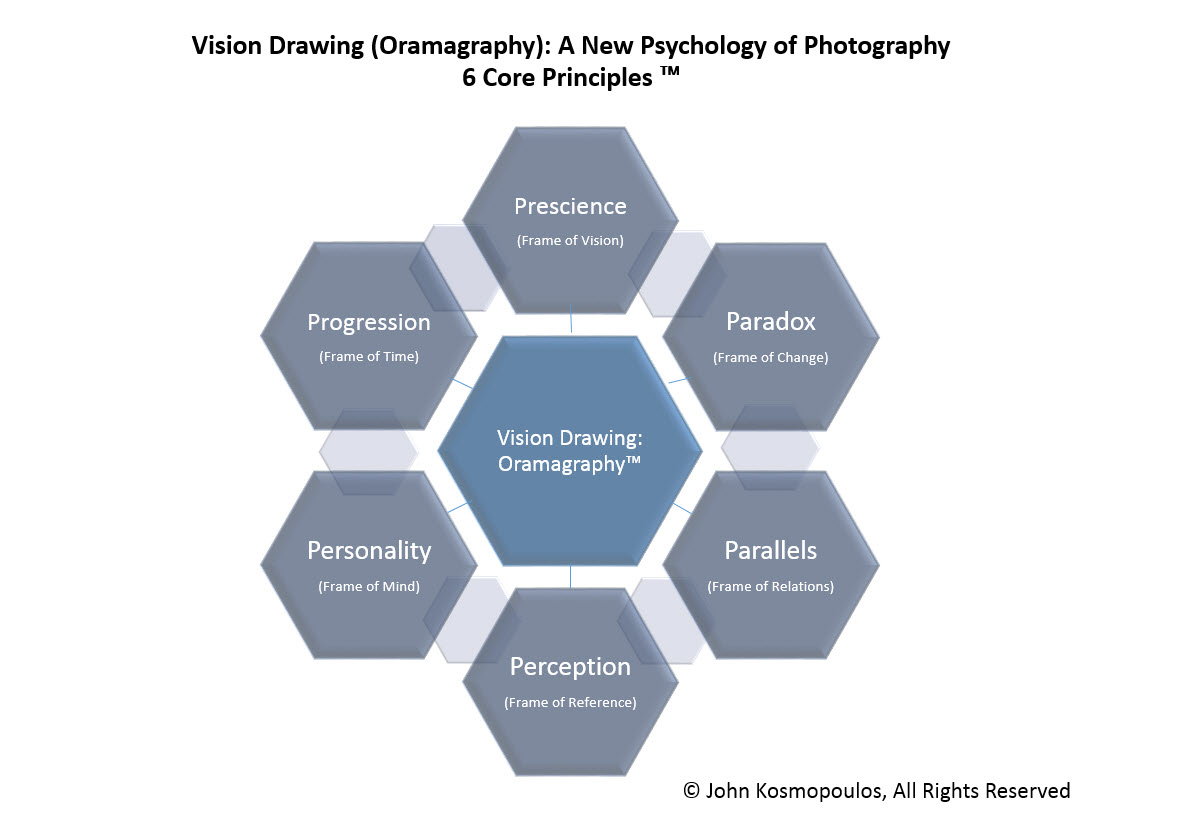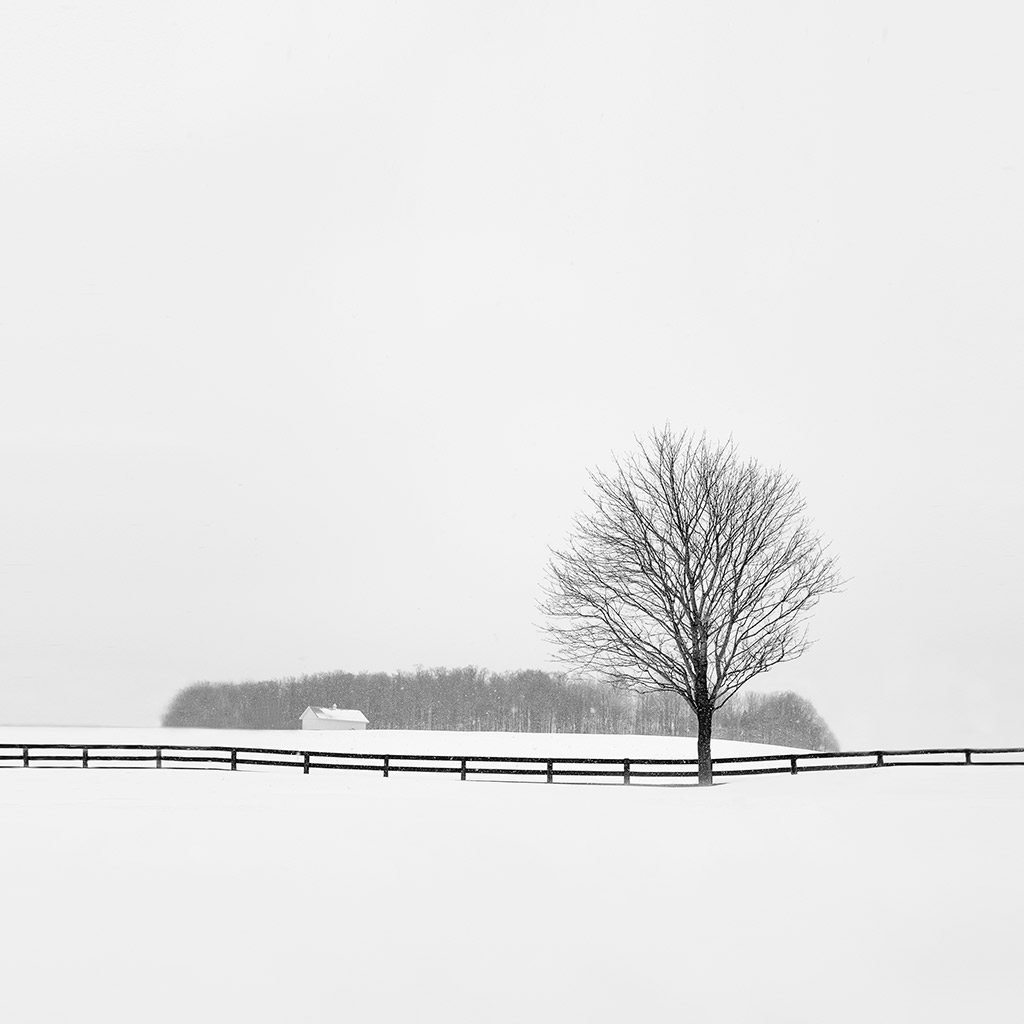Note: All images and texts on these pages are protected by copyright and may not be used, shared or reproduced in any way for any purpose without the author’s permission.
“Vision Drawing (Oramagraphy)” is a psychology of photography and a new way to consider the art of photography. What you do when you take a photograph with your camera is photography (light drawing); what you do and why before, during, and after you make the photograph is oramagraphy (vision drawing). In essence, it refers to a personal set of creative-expressive skills from previsualization (a culmination of personal experiences that translate the present moment into alignment with the photographer’s vision to fulfill new creative impulses) to a realized vision in photography and the psychological and motivational characteristics inherent in the entire process. Upon reading from some of the masters of photography like Ansel Adams and Henri Cartier-Bresson and delving into my concepts and background in psychology, it became clearer and clearer to me that vision drawing / oramagraphy is part of every photographer’s process but individualized based on their own psychology. In essence, what and how we take a photograph becomes secondary to why we choose to make a photograph the way we do. If we answer the why (the function / the narrative / the thematic intention/ the equivalent “why not”), we understand the psychology behind the photo and future inspirations much better.
The camera is considered a tool to conceptualize, contextualize and complete your vision drawings by bridging your “physical vision” (central and peripheral systems, visual perception) and “psychological vision” (metaphorical, symbolic, autobiographical) to achieve your “photographic vision”. For me, photographic vision is not a uniform style or stepwise formula but a psychological exploration, an emotional statement and an artistic experimentation of the many realities that we create when making a photograph. It is a way of “imprinting” who you are and who you will be in every photograph in your evolution as an artist. Notice from the graphic that there is a 2-way arrow. This refers to how the shaping of photographic vision can act as a way to see the world differently based on an already transcribed vision. Think of it as a template that you work with the next time you are presented with a similar scene that becomes enhanced by new experiences and new approaches that you try in your photography.
As a means of broadening the scope of the psychology involved in photography, I have created a dynamic and fluid hexagonal-like model of six core concepts or principles that are also applicable to the pursuit of other fine arts as such music, film, painting and architecture. As with all forms of art, it is not just the artist’s psychology that matters but also the viewer’s psychology and the synergy between both to create interaction and impact. Each principle is a beginning and an end in the process. I have provided an example of this process using one of my latest photos in my “Prelude to Silence” series.
Prescience (Frame of Vision) – This principle refers to having foresight or the ability to sense and visualize something before it takes place (i.e., before the click of the camera). It is at the heart of photographic vision when a photographer stands before a scene and intimately defines the present moment (previsualization or simply visualization) and then allows the process of their vision to be fulfilled to it’s zenith (realized art). However, given the framework of the model, this idea of “prescience” can occur anywhere and at any time in the process, including in the digital darkroom after you have captured your photograph.
Vision for an artist can be a fluid process that is stimulated and shaped by other factors (namely the other core principles) before the photographic art is considered “complete” in the digital darkroom. Vision may also be re-imagined as part of a new and true vision (e.g., new post-processing). In many ways, photographic vision is like origami where you begin with a piece of paper (essence) and create a swan or anything else from it (substance). Although photographic vision is often considered an ambiguous and ethereal notion, personal insight into the psychology involved in your photography requires you to be both meditative and decisive.
(Please also review: The 5 C’s of Photographic VISION with exercises)
Paradox (Frame of Change) – Many of us think of this term as a situation or statement that is made up of two opposite propositions that seem impossible and untrue but are actually possible and true. However, we may also consider this term as creation of art as contrary to your own expectations (e.g., becoming eclectic in your pursuits or creating out of your comfort zone) and a coexistence of common sense and uncommon sense when creating photographic art (e.g., abstracting abstract architecture or taking a photo of a building “upside down” in the frame). For me, a personal originality or authenticity as an artist is born of such paradoxes. The competition is with yourself as an artist where photography is viewed as a value and not always a goal. It is similar to the idea of a student becoming the master but in this case you are always the student and the master as an artist. In essence, it is a state of self-inspiration and counterintuition. We learn about ourselves as much as we learn from others. It is also the photographer living and acting on making the ordinary extraordinary and simplifying the complexity of beauty in stilled moments.
(Please also review: CPO Interview & International Interviews)
Parallels (Frame of Relations)– As photographers, we are often trying to depict ethereality about our experiences through our photography. Photography offers a parallel universe of possibilities from the all-too-real to the surreal, from the literal to the metaphorical and symbolic as part of our vision drawings. You are not only holding up a mirror to reality as we know and understand it, but also tilting the mirror to find unique perspectives and inspiration. It is not a “blank canvas” that we start with (as you are always starting with something and perhaps subtracting from it and even adding to it) nor perhaps an alternative or altered reality but a purposeful and relative realignment, a “deliteralization” of forms, shapes, spaces, time, contrast, patterns, light and shadows that is equivalent or related to our own photographic vision. The elements of a photograph come together in harmony to communicate an admiration of a subject, to provide an interpretable story in a stilled moment, and foster a relationship between the photographer and the viewers.
(Please also review: The LEICA Theory & G-Zone of BGW Photography).
Perception (Frame of Reference)– This principle refers to the identification, organization and integration of all sensory information to comprehend and represent the relationship between ourselves and our environment. Our perceptions shift based on our motivations and experiences but they also change based on how we learn and practice skills like photography. I said this in my introduction but it is worth repeating: What and how we take a photograph becomes secondary to why we choose to make a photograph the way we do. Ask any photographer and they will tell you that they see photos waiting to be made all around them or they notice things that others do not notice. The way you perceive and sense beauty is the way you will translate it and reference it in your own photography. The “felt aesthetic” (that is part of my definition of fine art photography), in my opinion, is the ultimate perception in art. It is also the currency of all authentic and powerful fine arts including music, film, and architecture.
(Please also review: Fine Art Photography Definition & The FEEL PRINCIPLE of Fine Art Photography – “Odyssey of Vision” Interview).
Personality (Frame of Mind)– The camera is an extension and projection of your own psychology. When I refer to personality, I am not only referring to qualities of character or a constellation of behaviours but a photographer’s distinctive story within the context of their social and cultural identity and their own personal philosophies and guiding principles. It matters for any artist. The way we think, feel and act as photographers within the social environment is part of our psychology as photographers. Although photography offers a universal language, how we interpret that language says very much about who we are and what meaning a photograph has for us. There is a reason why I have chosen photography and photography has chosen me: I love what I do and what it offers me. As photographers, we understand the need for promotion and appreciation for what we do, but there is a fine line between promotion and braggadocio, attention and notoriety. You may offer few photos a year or be prolific (notice that rarity does not equate to quality as many famous painters were prolific), you may get many awards and publications one year and not the next, a huge amount of followers on one social media site and less on another, etc. Is that the sum of who you are as a photographer? I am not suggesting that these things do not matter in the art world, they do to an extent, what I am referring to is how engaged you are as a photographer and how passionate you are about your craft; confidence and commitment matters. There is something to be said about allowing your art to speak volumes and sharing an emotional and aesthetic experience between the artist and the observer of the art. It is one of the many reasons that I feel that the final decider in photographic art is the actual physical print that you can enjoy and explore in all its splendour.
(Please also review: EAFA – “Eclectic Aesthetic Fine Art” & “Insight, Inspiration & The Ingenuity of Photography“)
Progression (Frame of Time)– Images can change the world as we know and understand it. All you have to do is open a National Geographic, a famous fine art book, or enter a gallery of famous photographs in history to immediately understand the power they have to convey a personal message but also to touch people’s lives. As avid photographers who want to make a difference, we strive for a personal evolution to create revolution and innovation in fine art photography. Not everyone will want to push boundaries and change the gravitational pull of certain photographic art movements, but understanding our own motivations and shaping our own photographic vision is a necessary exercise to progression in our own photography over time to produce the “wow” factor for ourselves.
(Please also review: Archistract Art: Theory & Types).
Review Excerpt: “John Kosmopoulos has made another attempt towards defining the art and craft of photography. Although many others have done so, Kosmopoulos´ one is much different. No pile of pages or even books cir-cum-describing the same insufficient puzzle of ideas struggling to carve them into words. It’s subtle. It’s simple. It’s apt.” ~ “Psychology of Photography Simplified: John Kosmopoulos’ Concept” by Dusan Labuda, Editor – 1x.com (2019)
How to Use the 6 Core Principles to Answer the “Why” (and “Why Not”) of Photography
Prescience (Frame of Vision): When I approach such a scene, I tend to see forms, shapes, patterns and impressionistic sketches of a scene that I contextualize against the whole and then slowly layer elements that I harmonize in the frame. I wanted to create a flow given the fence, snow and landscape while providing a stillness with the composed elements. I could have chosen to have the tree off to the right more but I think it balances the tree and barn with the distant background of faded trees.
Paradox (Frame of Change): Snowscapes is something I have wanted to try for a long time now. I did not read about how to take such photographs but went completely on instinct, exploration and experimentation (e.g., I chose to explore on an overcast day to avoid reflections). I enjoy that type of experience tremendously. I wanted to capture something quite different (the visual weight, flow and presence of elements in the frame). I think my choice of composition speaks to a pursuit of a personal originality).
Parallels (Frame of Relations): I wanted the viewer to feel the serenity and silence of this beautiful scene. I also wanted to give the viewer a sense of harmony as if they were immersed in this scene while creating an ethereal experience that would echo in their minds.
Perception (Frame of Reference): When I first perceived and considered the elements of this scene (and others around me), I wanted to free the setting of any distractions. The raw reality of my physical vision gave way to my psychological vision to create a cinematic scene. I also wanted the viewer to feel the beauty of the stilled moment like I experienced it. Part of my post-processing was to use a “less-is-more” approach (like I like to do) and ensure that the eyes were relaxed by the elements within the frame.
Personality (Frame of Mind): I very much wanted to capture “the complexity of beauty in the simplest of moments” that I wrote about in my biography. Although there is nothing wrong with simply giving the name of the subject as a title for the photo, I like to represent the meaning of the photo with an interesting title (while offering proper tags). I think it speaks to the personality of the photographer when they can come up with a title as interesting as the photo. I promote my work on many platforms like many photographers do but I am not looking for attention or accolades. I am looking for an awareness of confidence and commitment as a passionate photographer.
Progression (Frame of Time): I choose to continuously evolve as a photographer. If you consider my earliest work, it was mostly colour abstract images. I love those images but I have since enjoyed the many blessings and timeless qualities of black and white photography. As part of my EAFA philosophy, I will continue to explore many facets of the photographic arts. With every new photo and subject, I discover new things about my own need to stop and feel the world around me as much as possible. Vision drawing (oramagraphy) offers me a therapeutic mindfulness and forgetfulness at the same time.



